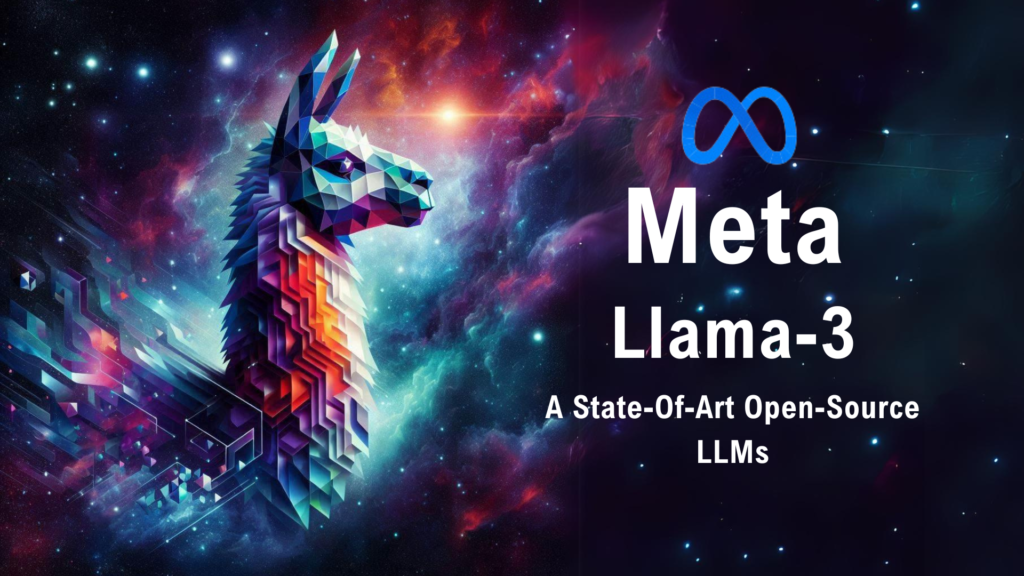Meta’s Llama 3: A Powerful Open-Source LLM
Meta has taken a significant step forward in developing open-source large language models (LLMs) with the release of Llama 3. This next-generation model boasts superior performance to its predecessors and even rivals industry-leading models like Gemini.
Raising the Bar for Open-Source LLMs
Meta claims that Llama 3 establishes new standards in the LLM field. The initial release includes two models: an 8 billion parameter version and a 70 billion parameter version. Both outperform previous open-source models on popular LLM evaluation tasks.

The company is also training even larger models with 400 billion parameters, which will be released in the coming months. These models are expected to further enhance Llama 3’s capabilities.
Transparency and Collaboration Through Open-Source
A key aspect of Llama 3 is its open-source nature. Meta is releasing the models under an “open by default” approach, aiming to promote a more open ecosystem for AI development. It allows researchers and developers around the world to access, study, and modify the models, accelerating advancements in the field.
Victor Botev, CTO and co-founder of Iris.ai, highlights the importance of transparency in AI development. By making Llama 3 open-source, Meta aligns itself with the growing emphasis on responsible AI practices and ethical development. Open-source models allow for greater community inspection, which can help identify and address potential biases or safety concerns.
Safety and Security Remain Paramount
While open-sourcing a model promotes transparency, Botev emphasizes that it doesn’t automatically equate to ethical AI. Addressing the challenges of AI requires a comprehensive approach that tackles issues like data privacy, algorithmic bias, and societal impacts.
Meta acknowledges this and has implemented a “system-level approach” to responsible AI development with Llama 3. The models have undergone extensive safety testing. However, Meta emphasizes that developers should still implement their own input/output filtering mechanisms to ensure the model is used safely within their specific applications.
In addition to the models themselves, Meta has released an updated suite of AI safety tools. These tools include:
- Llama Guard (second iteration): This tool classifies potential risks associated with the model’s outputs.
- CyberSec Eval: This tool assesses the potential for misuse of the model.
- Code Shield: This new component filters out insecure code suggestions generated by the model.
Meta AI: A Powerful User Experience
Meta AI, the company’s intelligent assistant, is now powered by Llama 3. This integration allows users to experience the capabilities of the model firsthand. Meta AI can be accessed through Facebook, Instagram, WhatsApp, Messenger, and the web, and can be used for various tasks including:
- Productivity tasks
- Learning
- Creativity
- General information retrieval
Meta is also developing multimodal versions of Meta AI that will integrate vision capabilities. An early preview of this technology will be available on Meta’s Ray-Ban smart glasses.
The Race for Open-Source LLM Supremacy
While Meta’s release of Llama 3 is a significant achievement, some in the AI field question the company’s true motivations. Some believe that Meta’s focus on open-source may not be solely driven by altruism.
However, there’s no denying that Meta’s release has strengthened the competition in the open-source LLM space. Just a day before Meta’s announcement, Mistral AI set a new benchmark with their Mixtral 8x22B model. This ongoing competition is ultimately beneficial for the entire field, as it pushes the boundaries of what’s possible with open-source LLMs.
The Future of Open-Source AI with Llama 3
Llama 3 represents a significant step forward for open-source LLMs. Its impressive performance, focus on responsible AI development, and integration with user-friendly applications like Meta AI position it as a powerful tool for researchers, developers, and everyday users alike.
As Meta continues to develop even larger models and integrate multimodal capabilities, the potential applications of Llama 3 will only continue to grow. This open-source approach has the potential to democratize access to advanced AI technology and accelerate advancements in the field for years to come.
To stay updated on the latest developments in AI, visit aibusinessbrains.com.




